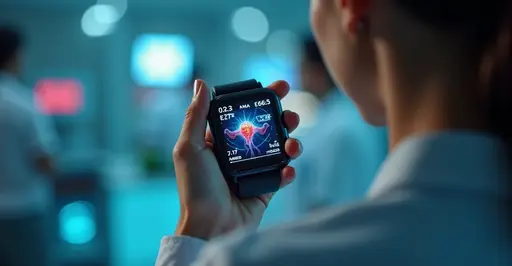Smart textiles with embedded sensors are revolutionizing health monitoring through clothing that tracks vital signs and activity levels seamlessly, moving beyond traditional wearables.

The Rise of Intelligent Clothing
Smart textiles are transforming from science fiction to everyday reality as clothing embedded with sensors becomes increasingly market-ready. These innovative garments are revolutionizing how we monitor health and fitness, moving beyond traditional wearable devices like smartwatches to integrate technology directly into the fabrics we wear.
What Are Smart Textiles?
Electronic textiles, or e-textiles, are fabrics that incorporate electronic components such as sensors, batteries, lights, and microcontrollers directly into their structure. Unlike traditional wearables that attach to clothing, these advanced textiles seamlessly integrate technology into the garment itself, creating clothing that can monitor vital signs, track activity levels, and even provide real-time feedback.
Market-Ready Products
The smart textiles market has evolved through three distinct generations. First-generation products attached sensors to apparel, while second-generation items embedded sensors within garments. The current third-generation technology represents the most advanced stage where "the garment itself becomes the sensor", according to industry experts.
Major sportswear brands including Adidas, Nike, and Under Armour have been pioneering first-generation wearable technology, while companies like Samsung, Alphabet, and Ralph Lauren are advancing second-generation embedded sensor technology.
Health Monitoring Capabilities
Modern smart textiles can monitor an impressive range of health metrics including heart rate, respiratory rate, body temperature, muscle activity, and even stress levels. These garments use conductive threads and advanced fabric technology to collect data without the wearer noticing they're being monitored.
"The beauty of smart textiles is their unobtrusive nature—they provide continuous health monitoring without requiring the user to remember to wear a separate device", explains Dr. Sarah Chen, a wearable technology researcher.
Applications Beyond Fitness
While fitness tracking remains a primary application, smart textiles are finding uses in medical monitoring, workplace safety, and even military applications. Patients with chronic conditions can benefit from continuous monitoring, while workers in hazardous environments can be alerted to dangerous physiological changes.
Future Developments
The field continues to evolve with researchers developing pressure, strain, and temperature sensors that can be woven directly into fabric. The integration of artificial intelligence with smart textiles promises even more sophisticated health insights and predictive capabilities.
As privacy and security concerns are addressed, and as manufacturing costs decrease, smart textiles are poised to become a mainstream technology that could fundamentally change how we approach health monitoring and personal wellness.

 Nederlands
Nederlands
 English
English
 Français
Français
 Deutsch
Deutsch
 Español
Español
 Português
Português









